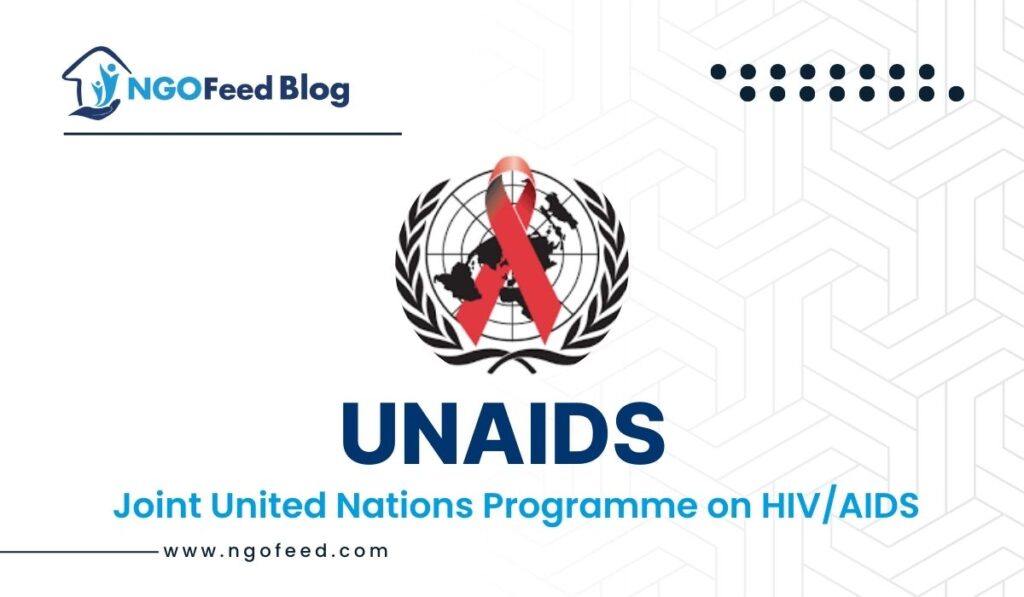UNAIDS Full Form: UNAIDS, also known as the Joint United Nations Programme on HIV/AIDS, is the main global champion for coordinated efforts to address HIV and AIDS. UNAIDS was created in 1994 to provide a comprehensive and coordinated response to the AIDS epidemic by combining the resources of the UN system. Its goal is to set the standard for global leadership in HIV prevention, treatment, care, and support and to urge others to follow suit, with the ultimate goal of eliminating the AIDS epidemic as a public health hazard by 2030.
Table of Contents
History of UNAIDS
The United Nations Economic and Social Council (ECOSOC) passed a resolution in 1994 creating UNAIDS, which went into operation in 1996. Its creation was prompted by the necessity for a coordinated, multisectoral response to the HIV epidemic, which was spreading too quickly for individual nations and organizations to handle. Ten UN agencies, including the World Bank, UNESCO, UNICEF, and WHO, were brought together by UNAIDS in order to pool their resources and expertise. In the long run, UNAIDS has been instrumental in resource mobilization, policy reform advocacy, and fostering international unity in the HIV/AIDS epidemic.
UNAIDS Function
UNAIDS carries out several vital tasks to combat the HIV/AIDS epidemic, including:
- Advocacy: Encouraging political leadership and commitment to the fight against HIV/AIDS.
- Coordination: Encouraging cooperation between governments, corporations, civil society, and UN agencies.
- Technical Support: advising and assisting nations in creating and putting into action successful HIV/AIDS initiatives.
- Monitoring and Evaluation: keeping tabs on the state of the worldwide HIV/AIDS epidemic and supplying information to guide programming and policy.
- Resource Mobilization: Organizing monetary funds to assist global HIV/AIDS programs.
- Human Rights: Fighting against discrimination and stigma while promoting the rights of those who are HIV positive.
Achievement
In the international fight against HIV/AIDS, UNAIDS has accomplished important milestones:
- Global Leadership: Made a name for itself as the front-runner in the battle against HIV/AIDS on a global scale, influencing financing and policy choices.
- Greater Access to Treatment: By the end of 2020, over 27 million people were receiving antiretroviral medication (ART) thanks in large part to this factor.
:: Decrease in New Infections: Helped to significantly lower the number of new HIV infections and deaths from AIDS. - Policy Change: This had a significant impact on a number of policy reforms, such as the elimination of travel limitations for HIV-positive individuals.
- Community Engagement: To ensure that those most impacted are at the heart of decision-making, the role of communities and civil society in the HIV response has been strengthened.
Facts and Figures
- Global Impact: Since the beginning of the epidemic, about 75 million people have contracted HIV, and around 32 million have passed away from AIDS-related diseases.
- Current Statistics: About 37.7 million persons worldwide were HIV positive as of 2020.
- Access to Treatment: 73% of HIV-positive individuals had access to ART by 2020.
- Reduction in Deaths: Since the peak in 2004, the number of AIDS-related deaths has dropped by 60%.
- Funding: With major donations from governments, the commercial sector, and philanthropy, UNAIDS has raised billions of dollars in funding for HIV/AIDS initiatives around the world.
Challenges of UNAIDS
UNAIDS still confronts a number of obstacles in spite of its achievements:
- Resource Gaps: One of the biggest challenges to attaining universal access to HIV services is still a lack of finance.
- Stigma and prejudice: HIV prevention and treatment efforts are hampered by enduring stigma and prejudice toward those living with the virus.
- Geographic Disparities: Within and between nations, there are notable differences in HIV prevalence and service accessibility.
- Health Systems: In many low- and middle-income nations, inadequate health systems make it more difficult to provide HIV services.
- Political Will: Efforts to effectively combat the epidemic may be hampered by inconsistent political leadership and commitment.
- COVID-19 Impact: HIV services have been hampered by the COVID-19 pandemic, which may undo recent advancements.
Conclusion
In the global battle against HIV/AIDS, the Joint United Nations Programme on HIV/AIDS (UNAIDS) has been a key player, driving notable advancements in advocacy, treatment, and prevention. UNAIDS is still vital in bringing the world together to put an end to the AIDS epidemic, despite the obstacles that it faces. With persistent cooperation, inventiveness, and steadfast dedication, the goal of an AIDS-free world may be achieved.


